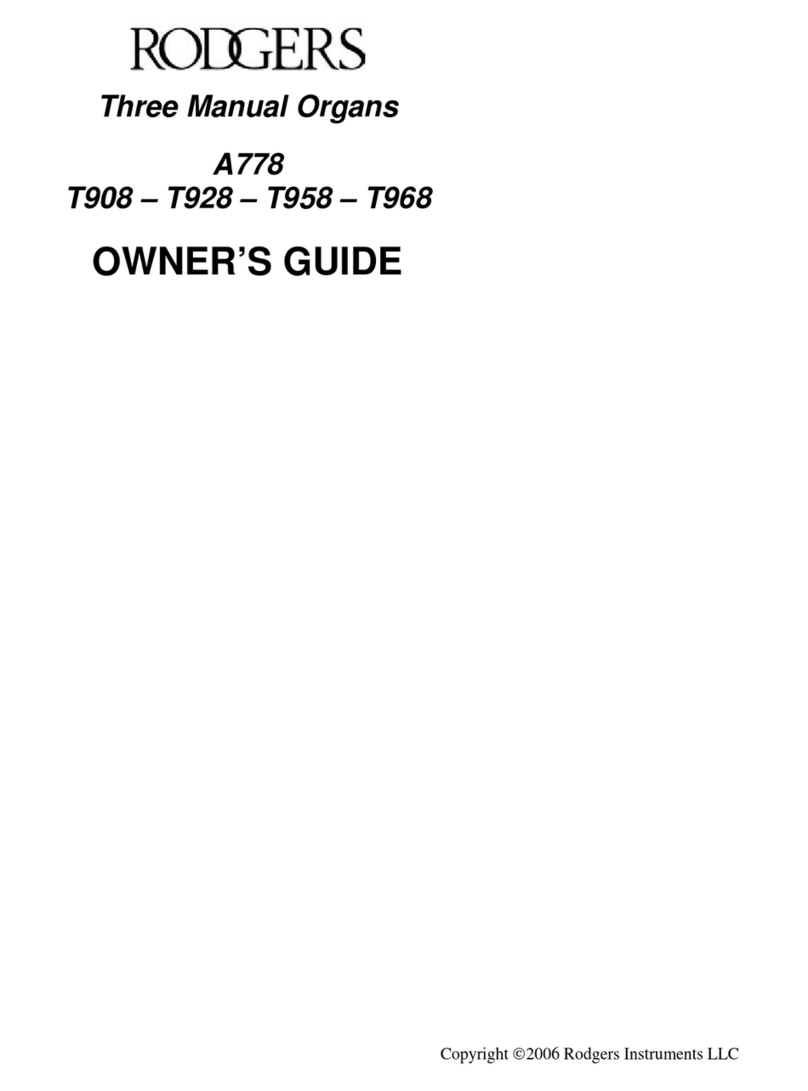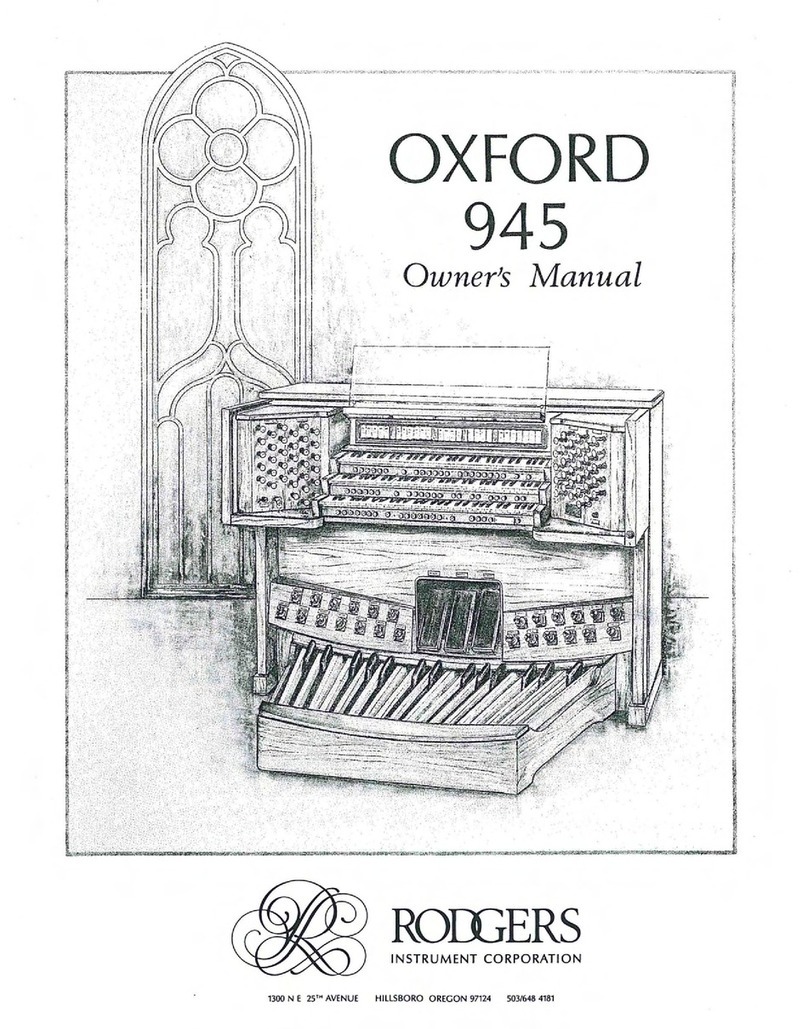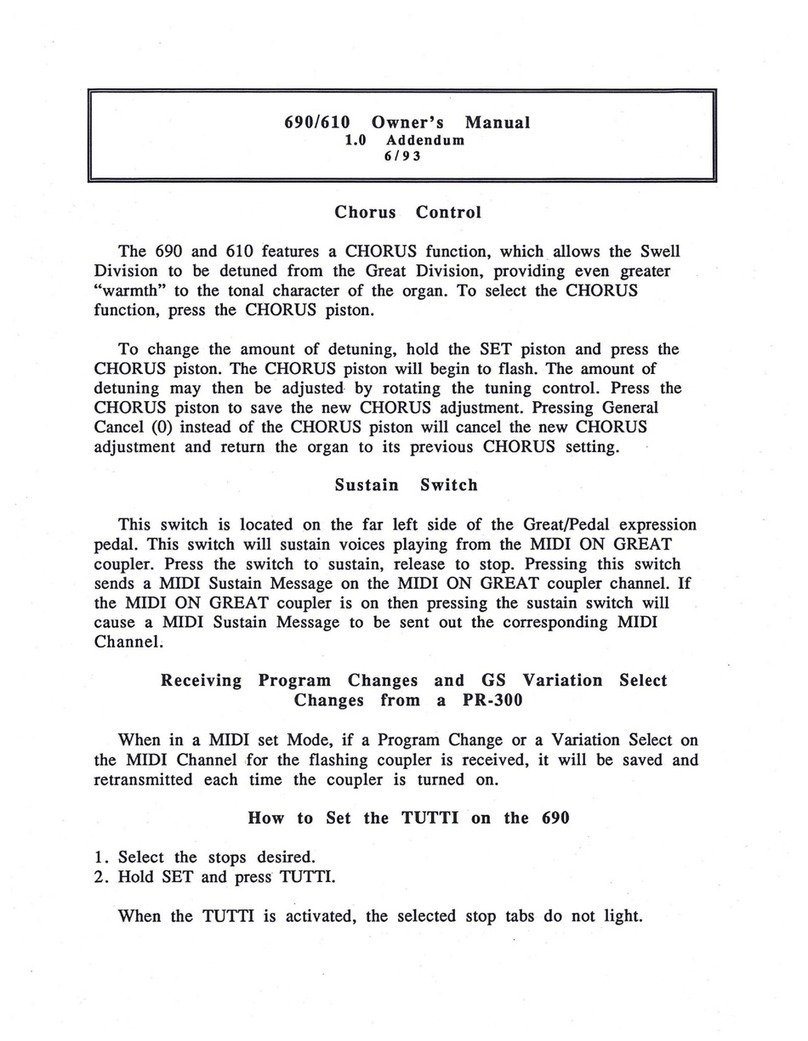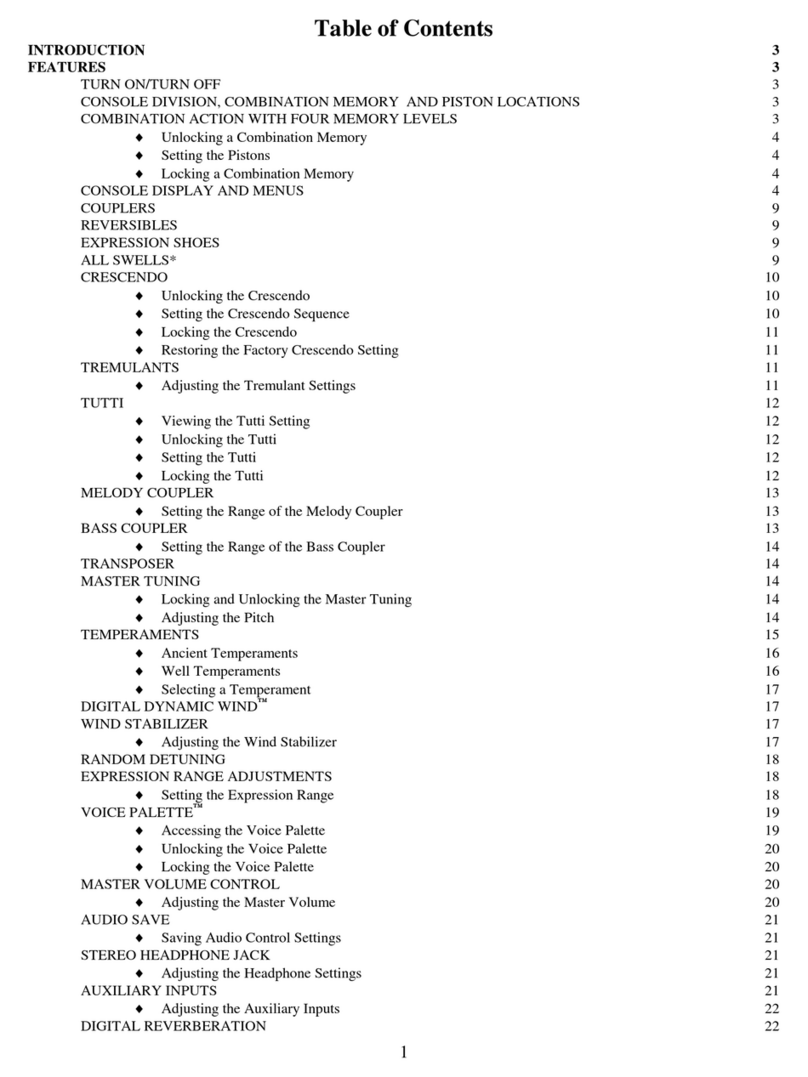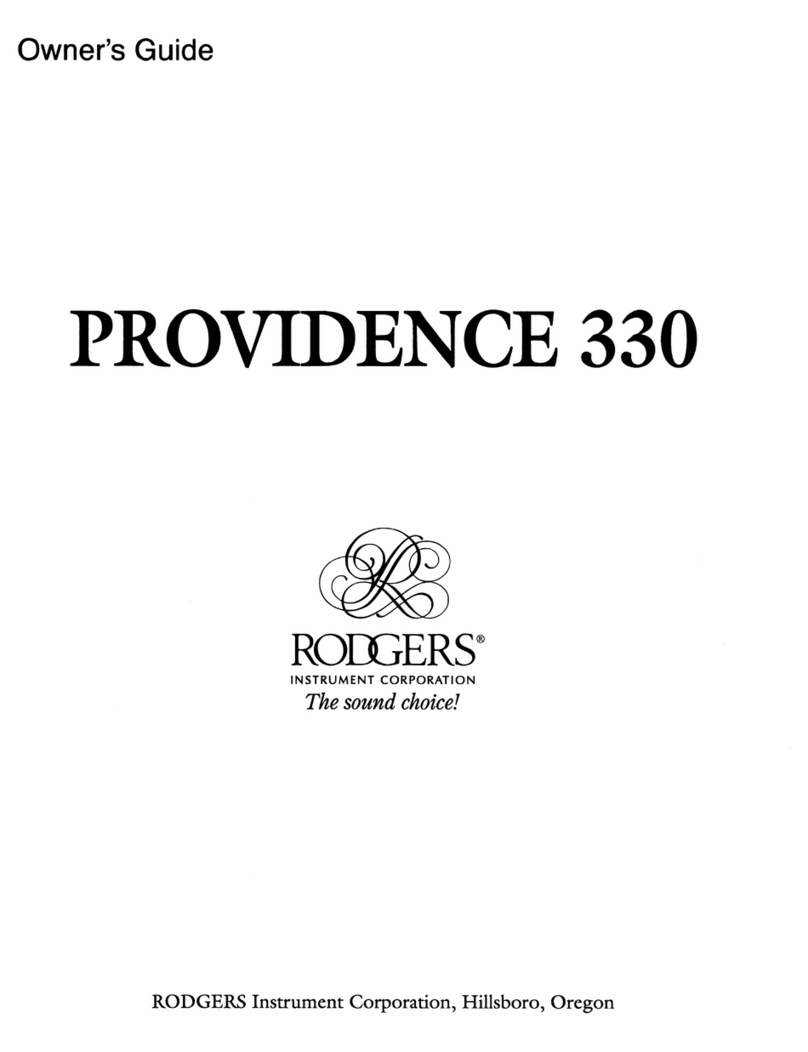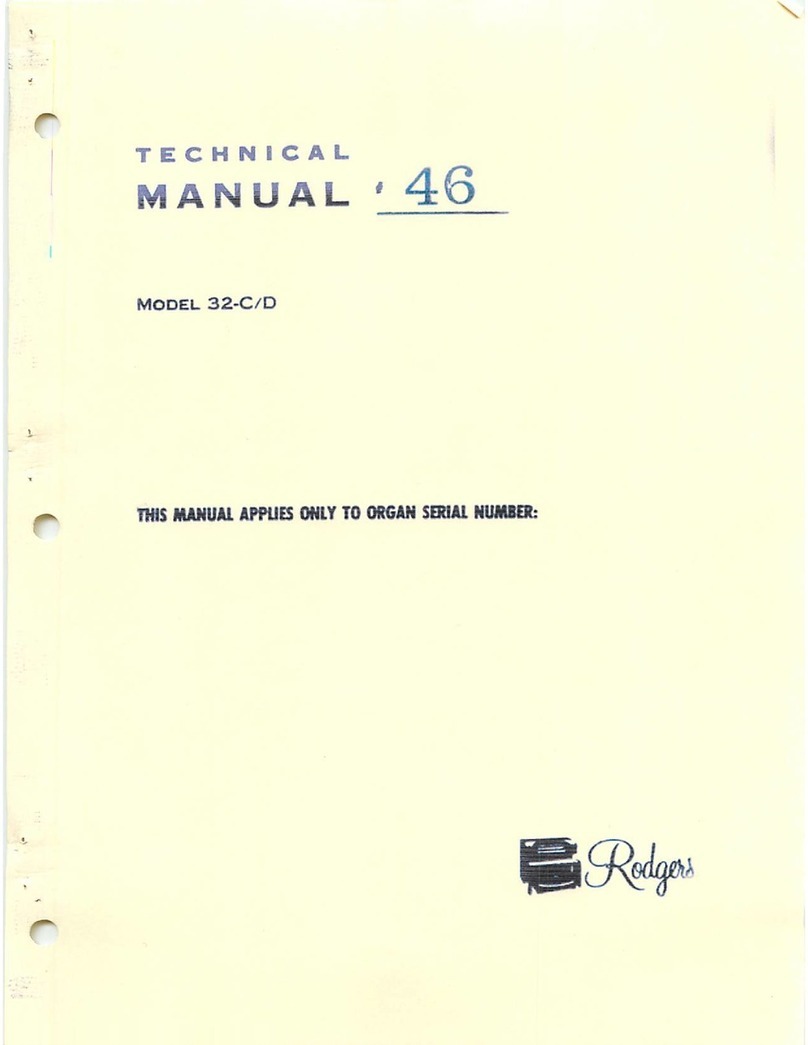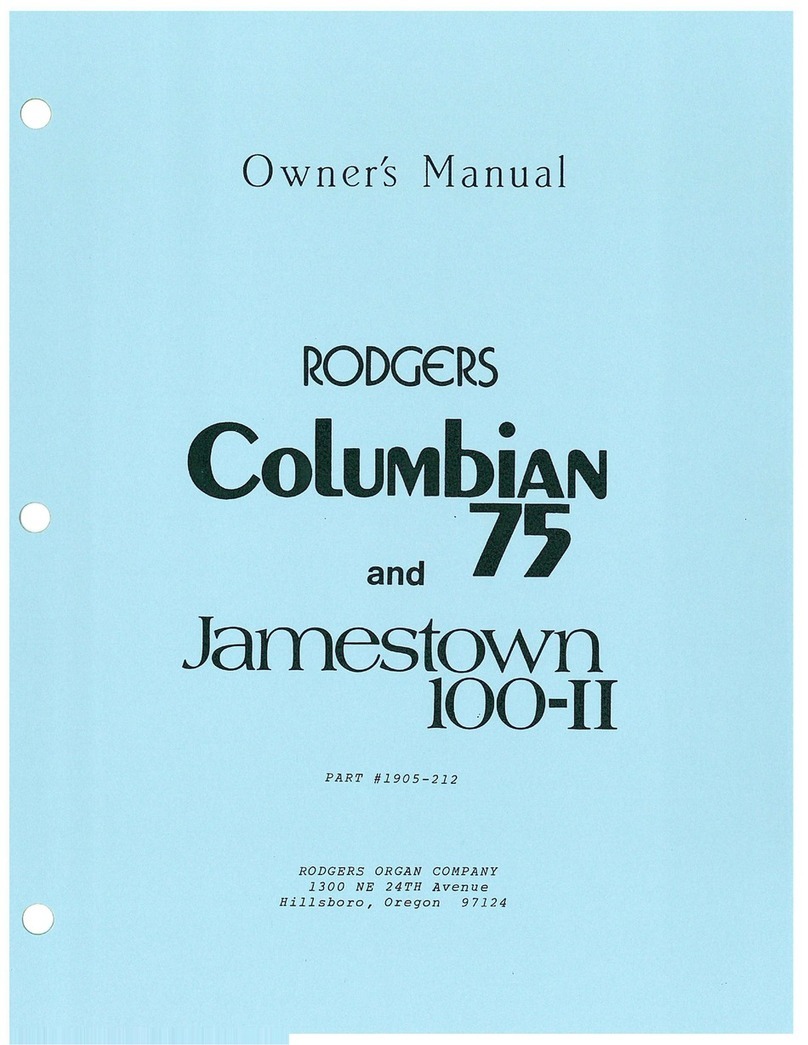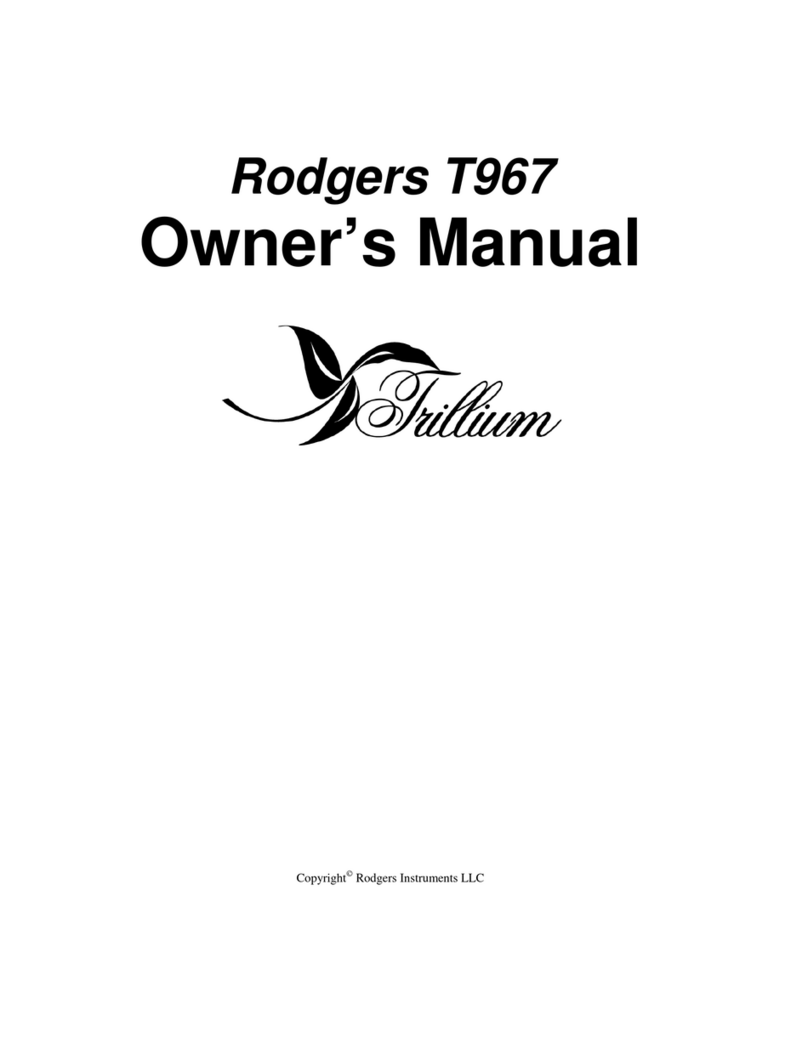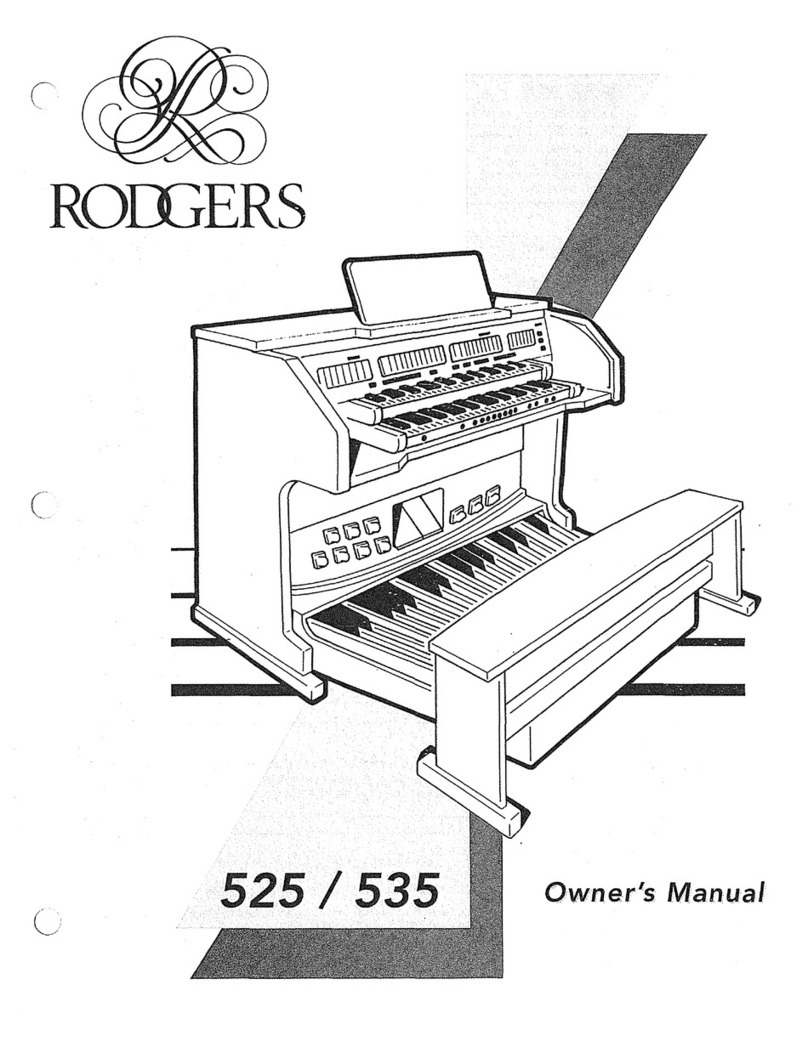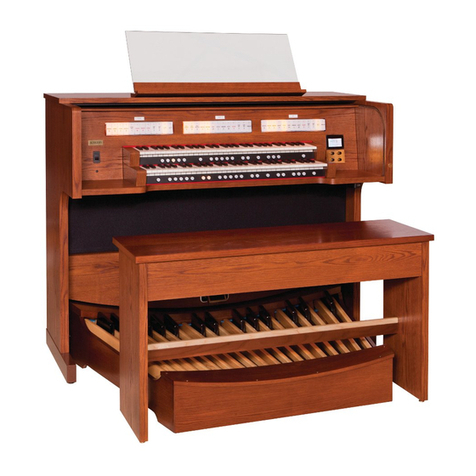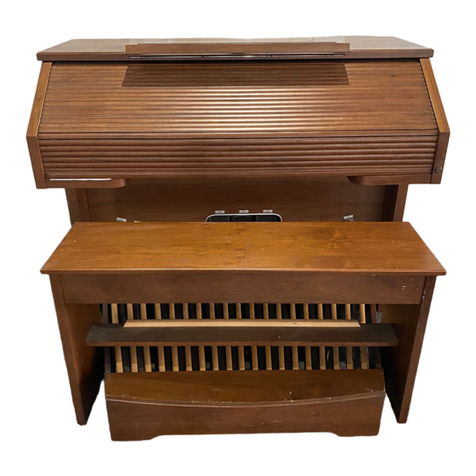IOVERVIEW
OF
THE CAMBRIDGE 735 1
Congratulations on yourpurchase
of
the Rodgers CAMBRIDGE 735. The CAMBRIDGE 735 is
theindustry'shighestqualitychurchorganbothin sound andin construction, providingyears
of
reliable
service.
The CAMBRIDGE 735 is atwo manual classical organ that incorporates an eclectic specification
andauthenticpipeorgan soundsachievedthroughRodgers
PDfThl
(ParallelDigitalImaging)technology.
In additiontoitsstandardsix-channelaudiosystem, the CAMBRIDGE735 hasprovisions for additional
amplification and antiphonal (echo) speaker systems.
The
CAMBRIDGE735 utilizes lighted drawknob and tilttab stopcontrols. All traditional couplers
(unison, subs and octaves) are included, as well as an adjustabie combination action (pistons) with four
memories and all standard reversibles and other functions.
TheRodgers CAMBRIDGE735 console is constructed
of
the finest woods andveneers, suitable in
the most elegant surroundings. It is unsurpassed in beauty and longevity.
Real wind-blown pipe ranks may
be
added to the Rodgers CAMBRIDGE 735. There are many
standard and custom configurations available to choose from for expansion
of
the organ specification.
TheRodgers CAMBRIDGE735 is completely voiced and tuned for optimum tonal authenticity. A
Rodgers factory-trained technician can provide any additional on-site voicing
or
finishing that may be
desired.
The
CAMBRIDGE735 offers full MIDI(MusicalInstrumentDigitalInterface) capability, allowing
the organist to control otherMIDI devices (keyboards, sequencers, rhythm units, sound modules, etc.).
MIDI allows the performer full recording and playback capabilities.
Thank youforchoosing the Rodgers CAMBRIDGE 735. Through the most advancedtechonology
available, Rodgers Instrument Corporation delivers proven reliability and atradition
of
musical
excellence and innovation, marking our position as The SoundChoice!
1
